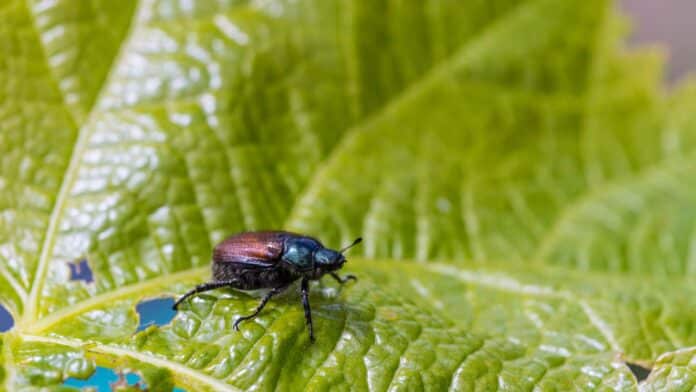Whirligig beetles, known as the fastest-swimming insects, were previously believed to rely on drag-based thrust for propulsion. However, the lift-based thrust is the primary source of acceleration, allowing these aquatic beetles to achieve remarkable swimming speeds.
In a new study, scientists used high-speed cameras to demonstrate that lift-based thrust enables the rapid swimming of the whirligigs. The centimeter-long beetles can reach a peak acceleration of 100 meters per second and a top velocity of 100 body lengths per second (or 1 meter per second).
The findings provide an understanding of the remarkable speeds achieved by whirligig beetles and present valuable insights for designers of bio-inspired water robots and unmanned boats operating near the water’s surface.
By employing two high-speed cameras positioned at different angles, the researchers captured footage of a whirligig beetle, revealing the lift-based thrust mechanism. Unlike drag-based thrust, where the thrusting motion is in line with the water surface, lift-based thrust functions like a propeller, generating a perpendicular motion that minimizes drag and enables more efficient momentum, facilitating higher speeds. This observation contributes to understanding the unique propulsion system employed by whirligig beetles.
Chris Roh ’12, assistant professor of biological and environmental engineering in the College of Agriculture and Life Sciences, said, “In biology, it’s hard to rotate things. We’re machines based on contraction. So, you could say the whirligig beetle’s legs are a partial propeller that rotates about an angle and then retract before resetting and rotating partially again.”
In addition to analyzing leg and body velocities obtained from the synchronized camera observations, Sun applied aerodynamic formulas to determine that lift-based thrust played a significant role in generating the force needed for the rapid propulsion of whirligig beetles.
Roh said, “It’s not that different from an airplane wing being tilted a little bit. That angle of attack allows it to generate lift.”
Yukun Sun, a doctoral student in senior author Roh’s lab, is the paper’s first author, said, “In this work, we extended the length-scale down to 1 centimeter, which means that whirligig beetles are by far the smallest organism to use lift-based thrust for swimming.”
Roh said, “We’re hoping that this speaks to bio-inspired robotics and other engineering communities first to identify the right physics and then try to preserve that physics in creating the robotics.”
The U.S. Navy has been working on developing uncrewed boats, recognizing that traditional ship design is often limited by the accommodations needed for a crew. By removing the requirement for a crew, boats can be designed to be much smaller and more versatile. Researchers believe that the compact size, ship-shaped structure, and lift-based propulsion system observed in whirligig beetles provide valuable insights for informing the design of robotic ships.
Journal Reference:
- Yukun Sun, Jena Shields, Chris Roh et al. Whirligig beetle uses lift-based thrust for fastest insect swimming. Current Biology. DOI: 10.1016/j.cub.2023.11.008
